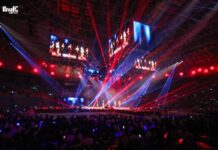
The Cultural Heritage Administration re-opens Jangneung, the tomb of Joseon’s 16th ruler King Injo and his queen, on June 17 for the first time in 46 years.
The Cultural Heritage Administration re-opened Jangneung (장릉, 長陵), the tomb of King Injo (1595-1649, r. 1623-1649) and his queen, on June 17 for the first time in 46 years. The day coincided with the annual ancestral ceremony, held each year in commemoration of King Injo, the 16th ruler of Joseon.
Jangneung was originally built in 1636 in another part of Paju City. However, the site was plagued by frequent fires and the stone structures became infested with snakes and scorpions. Consequently the tomb was moved to its current location in Tanhyeon-myeon in 1731 in the seventh year of the reign of King Yeongjo, the 21st ruler of Joseon.
When the tomb was relocated, some stone structures were restored while others were rebuilt once again. Due to this history, Jangneung features elements of both 17th and 18th century artisanship. For example, the stone base of the actual tomb is decorated with peonies and lotus flowers, rather than depictions of the twelve zodiac animals used in the 17th century, making for an interesting comparison between different styles.

The annual ancestral ceremony for King Injo, the 16th ruler of Joseon, is held at Jangneung on June 17.

Jangneung, the tomb of Joseon’s 16th ruler King Injo and his queen, features elements of both 17th and 18th century artisanship.
King Injo was placed on the throne in 1623 after Gwanghaegun (광해군), the previous ruler, was deposed in a coup d’etat. Unlike Gwanghaegun, who had practiced neutral diplomacy, King Injo pushed for more aggressive policies. Under his rule, Joseon resisted the Qing Dynasty and established friendly relations with the Ming Dynasty. However, the country experienced political turmoil under his reign, and was twice invaded by the Qings and had to surrender to the Qing emperor.
Her Bog Su, director of the Joseon Royal Tombs Management Office, said, “The significance of the re-opening of Jangneung is that we are giving back ownership of our cultural heritage to the citizens.” He added that the administration plans to adopt an open-door policy depending on the outcome of the re-opening.
By Lee Hana
Korea.net Staff Writer
Photos: Jeon Han, Korea.net Photographer
hlee10@korea.kr

Relatives of the royal family attend the annual ancestral ceremony for King Injo, the 16th ruler of Joseon, at Jangneung on June 17.

Relatives of the royal family bow before the ancestral rites table for King Injo, the 16th ruler of Joseon, at Jangneung on June 17.

In celebration of the opening of Jangneung, the tomb of Joseon’s 16th ruler King Injo and his queen, a photo exhibit is set up on the tomb site on June 17.























